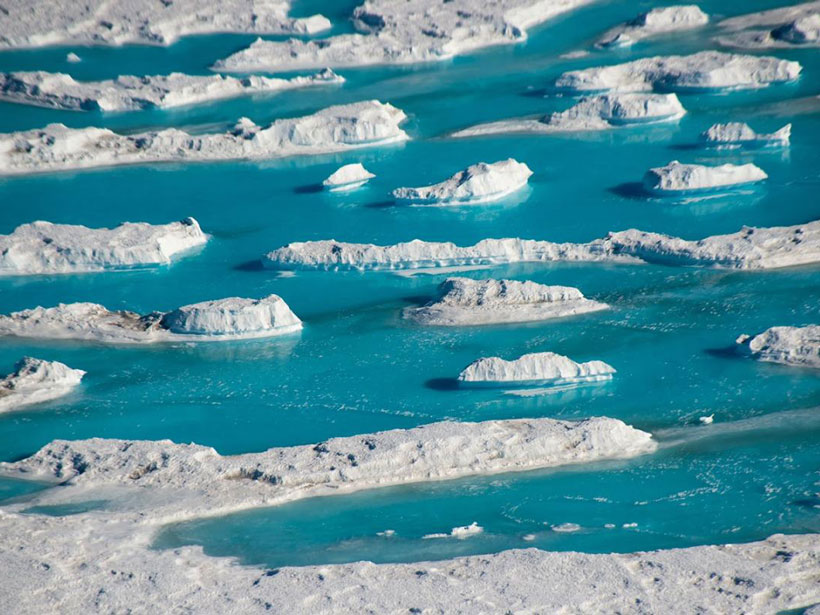There are more lakes of melted ice on the East Antarctic Ice Sheet than previously thought, according to the most comprehensive survey to date of the world’s largest ice sheet. The research, published in Scientific Reports on 25 September, found that the meltwater lakes predominantly form at low elevation, on shallowly sloped ground, and near the border where ice meets land.
“This dataset should help us better understand why lakes are forming where they are and that will help us predict how the distribution of lakes will change in the future, especially if air temperatures warm,” lead researcher Chris Stokes said in a statement. Stokes is a glaciologist at Durham University in the United Kingdom.
Dotting the Edges of Ice
The researchers gathered high-resolution images of the East Antarctic Ice Sheet from Landsat 8 and Sentinel-2A satellites taken during the January 2017 melt season. The team searched roughly 5 million square kilometers of the ice sheet.
From those images, the team identified nearly 65,500 supraglacial meltwater lakes that cover a total area of 1,400 square kilometers. Many of the lakes were about the size of a standard swimming pool, but the largest was about 70 square kilometers, bigger than the country of San Marino. The researchers said that there likely were many more lakes smaller than their detection limit.
“Some regions of the [ice sheet] may be closer to the threshold of instability than previously thought.”
Most of the lakes formed at 300-meter elevation or lower, in areas with surface slopes shallower than 1°, on ice flowing slower than 120 meters per year, and within 5–10 kilometers down ice of the grounding line. Around 39,000 (60%) of the lakes were on floating ice shelves along the periphery of the ice sheet. These patterns are similar to those discovered for meltwater lakes on the Greenland Ice Sheet, the researchers say.
The results “clearly indicate that some regions of the [ice sheet] may be closer to the threshold of instability than previously thought,” the researchers wrote. They cautioned that the 2016–2017 austral summer was probably an above-average summer for melting. Future surveys are needed to understand how the distribution of meltwater lakes changes over time and in different climate conditions.
This research will give glaciologists a baseline against which to measure rapid changes to the cryosphere from global warming, the team says. “Whilst there is no imminent threat to the stability of the ice sheet,” Stokes said, “our study has shown which areas we should be keeping an eye on over the next few years and beyond.”
—Kimberly M. S. Cartier (@AstroKimCartier), Staff Writer
Citation:
Cartier, K. M. S. (2019), Freshwater pools show Antarctica is more vulnerable than we thought, Eos, 100, https://doi.org/10.1029/2019EO134863. Published on 04 October 2019.
Text © 2019. AGU. CC BY-NC-ND 3.0
Except where otherwise noted, images are subject to copyright. Any reuse without express permission from the copyright owner is prohibited.

